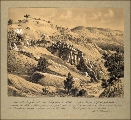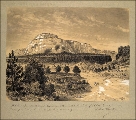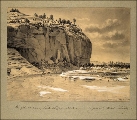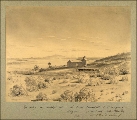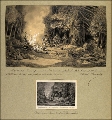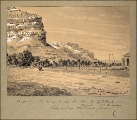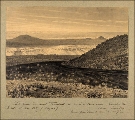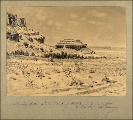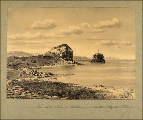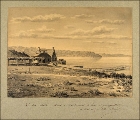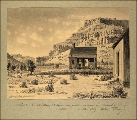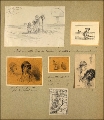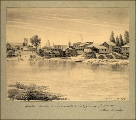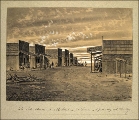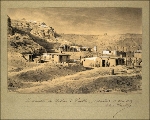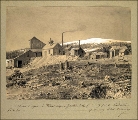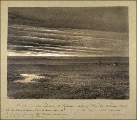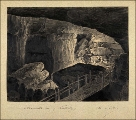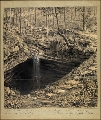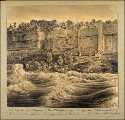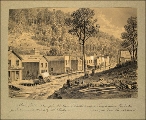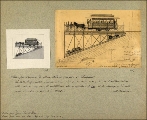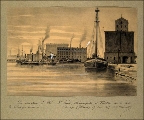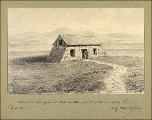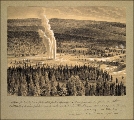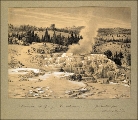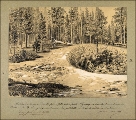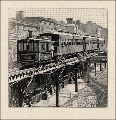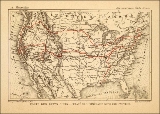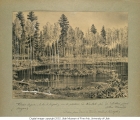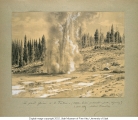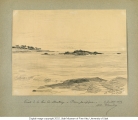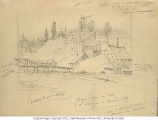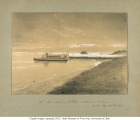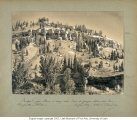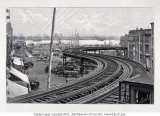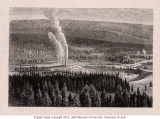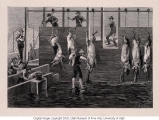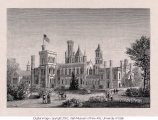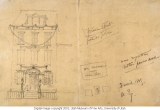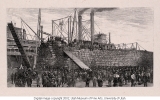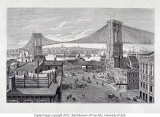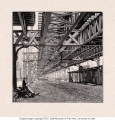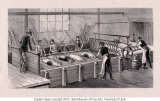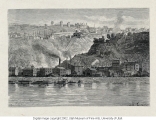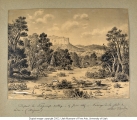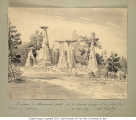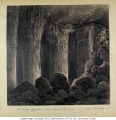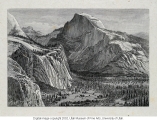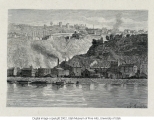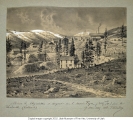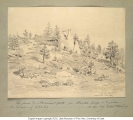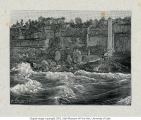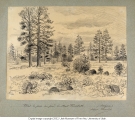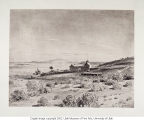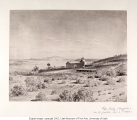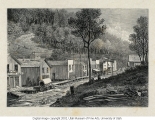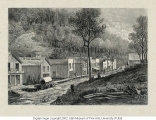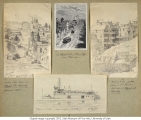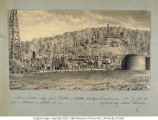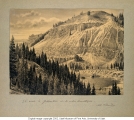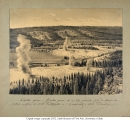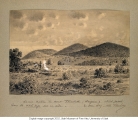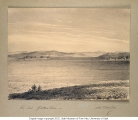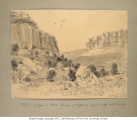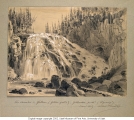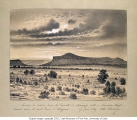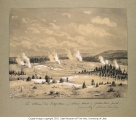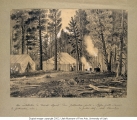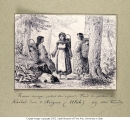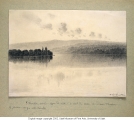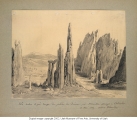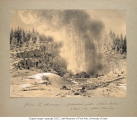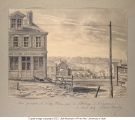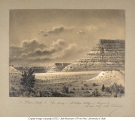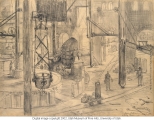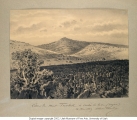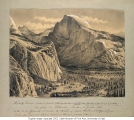| Identifier |
1978_337a-d_.jpg |
| Title |
Preparing Pigs for Market - Passage of Pigs through the Machine that Peels the Hides from the Carcasses Chicago |
| Alternate Title |
Passage des cochons Dans la machine a peler; Passage des cochons lavés, pelés, et décapités sur un rail; Lavage à grande eau des susdits |
| Creator |
Tissandier, Albert 1839-1906 |
| Subject |
Meat industry--Illinois--Chicago--1880-1890; Laborers--Illinois--Chicago--1880-1890; Machinery--1880-1890; Pork--1880-1890 |
| Published Location |
The top image, engraved by [Louis] Poyet, was published in La Nature, no 679 (5 Jun 1886), as figure 3 (p. 9) to accompany the ninth installment of Albert Tissandier's "Lettres d'Amérique", with the caption "Machine à racler la peau des cochons, à Chicago. (Dessins d'après nature, par M. Albert Tissandier.)" http://cnum.cnam.fr/CGI/fpage.cgi?4KY28.27/13/100/432/0/0 The same appears as figure 61 (p. [213]), engraved by [Louis] Poyet, in Albert Tissandier's book Six mois aux États-Unis : voyage d'un touriste dans l'Amérique du nord suivi d'une excursion à Panama (Paris : G. Masson, [1886]), with the caption "Machine à racler la peau des cochons, à Chicago, d'après nature". Associated text (p. 208): "Le cochon est accroché de nouveau à une chaîne qui le fait passer dans la machine à racler la peau (fig. 61). Des roues placées dans tous les sens pèlent et grattent le cuir du porc de façon à lui enlever ses soies. Il sort de là absolument nu, et la chaîne le traîne sur de nouvelles plaques de marbre où les ouvriers le lavent pour la deuxième fois sous des arrosoirs qui coulent à grande eau." Reproduced in the exhibition catalog, Albert Tissandier : Drawings of nature and industry in the United States, 1885, by Mary F. Francey ([Salt Lake City, UT] : Utah Museum of Fine Arts, 2001), p. 59. |
| Related Image |
For another version of the top drawing see http://content.lib.utah.edu/cgi-bin/docviewer.exe?CISOROOT=/UMFA&CISOPTR=209&CISOSHOW=85 |
| Short Essay |
The meat-packing industry was one of the first businesses to strengthen Chicago's economy. Because of the city's isolation and consequent scarcity of meat supplies from the eastern States, the meat industry was established in the 1820's. Downtown Chicago soon developed into the largest livestock market in the world. Each individual market employed over 157 men and women, and produced 10,800 hogs in one day's work. It was the scene in one of these slaughterhouses that captured Tissandier's attention during his visit to the city. The drawing Preparing Pigs for Market is focused on the beginning of the conveyer belt and the preparation of animals for packaging. The right of the composition shows two employees lifting the lifeless carcasses onto the packaging line which is passed down to the left where more employees wait to continue the butchering process. The main element in the composition is the center, the mechanical section of the moving conveyer, and the only part not operated by people. The machine consists of wheels and gears that are connected by piping that enables them to move in a circular motion. The wheels are placed on the left, right, bottom and top of the carcass on the conveyer belt to remove the skin of the animal as it moves through to the waiting butchers. Skins were left behind to fall and collect on the floor, an indication of the unsanitary conditions in these slaughterhouses when judged by today's standards. Tissandier said " ... The pig is again pulled by a chain which takes it onto the machine that scrapes off the skin. Wheels placed in all four directions peel and scrape the hide of the pig so as to remove the bristles. It exits, completely nude, and the chain pulls it onto new marble tables where workers wash it for a second time with high power spray nozzles". Tissandier's interest in the mechanics of the skin removal is evident in the detail of the workers who stand on both sides, and the accurate rendition of the details of the machine. His close attention to the machine suggests that perhaps he, like many of his contemporaries, wondered if the machine would eventually do the whole job, and the workers would become redundant. Tissandier's drawings of slaughtherhouses reflect a major aspect of Chicago's industry in 1885. Meat-packing was one of the strongest economic forces in the city, and played an important role in its growth. |
| Publisher |
Utah Museum of Fine Arts |
| Contributors |
Mary F. Francey |
| Date |
1885 |
| Type |
Image |
| Format |
application/pdf |
| Source |
Albert Tissandier: Drawings of Nature and Industry in the United States |
| Language |
fra |
| Rights Management |
Digital image c2001 Utah Museum of Fine Arts, University of Utah |
| Source Physical Dimensions |
38.74 cm High x 29.85 cm Wide |
| Source Characteristics |
Pen and black ink on paper |
| Light Source |
Kaiser Softlite ProVision 6x55W flourescent 5400K daylight |
| Archival Resolution |
TIFF: 4239 x 5084 pixels |
| Display Resolution |
JPEG: 900 x 1268 pixels |
| Bit Depth |
36-bit color |
| Scanning Device |
Leica S1 Pro scanning camera; Hasselblad CFi 50mm F/4 lens; f/11 |
| Exhibit Catalog |
ISBN: 0-9657215-0-7; Library of Congress Catalog Number: 2001094211 |
| Setname |
uu_umfa_at |
| ID |
415831 |
| Reference URL |
https://collections.lib.utah.edu/ark:/87278/s6bk1cds/415831 |

